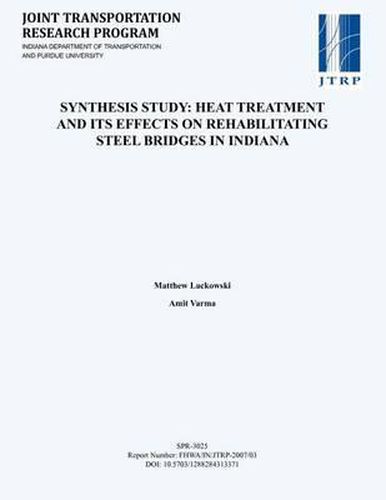Readings Newsletter
Become a Readings Member to make your shopping experience even easier.
Sign in or sign up for free!
You’re not far away from qualifying for FREE standard shipping within Australia
You’ve qualified for FREE standard shipping within Australia
The cart is loading…






Significant research has been conducted on the development of: (1) heat straightening repair techniques and their field implementation, (2) guidelines and recommendations for heat straightening repair, (3) empirical procedures for estimating plastic rotations achieved during heat straightening, (4) empirical procedures for predicting residual stresses caused by heat straightening, and (5) the effects of heat straightening on the structural properties of repaired bridges. Currently, there is a need for additional research on: (a) the fatigue performance of heat straightened beams, (b) the effects of single and multiple heat straightening on the fracture toughness and microstructure of steel beams, © the development of guidelines for evaluating and replacing steel beams subjected to single or multiple damage-repairs, and (d) investigating the effects of realistic heat straightening with imperfections on the properties and serviceability of steel beam bridges. The literature review of existing heat treatments indicates that heat straightening with maximum temperature limited to 1200 F is relatively similar to the process annealing heat treatment. Heat straightening with maximum temperature limited to 1400oF is similar to the normalizing annealing heat treatment. Both these heat treatments repair plastically deformed microstructure by the phenomenon known as recovery and recrystallization. Normalizing annealing is more efficient and faster than process annealing in repairing the plastically deformed microstructure by recrystallization. Heat treatment and repair of the material microstructure is incidental to the heat straightening repair process. The heat straightened beam can be further heat treated to complete the repair of the material microstructure (recrystallization etc.). The practical and economic feasibility of additional heat treatment using electrically powered and controlled radiant heaters was evaluated and found to be reasonable.
$9.00 standard shipping within Australia
FREE standard shipping within Australia for orders over $100.00
Express & International shipping calculated at checkout
Significant research has been conducted on the development of: (1) heat straightening repair techniques and their field implementation, (2) guidelines and recommendations for heat straightening repair, (3) empirical procedures for estimating plastic rotations achieved during heat straightening, (4) empirical procedures for predicting residual stresses caused by heat straightening, and (5) the effects of heat straightening on the structural properties of repaired bridges. Currently, there is a need for additional research on: (a) the fatigue performance of heat straightened beams, (b) the effects of single and multiple heat straightening on the fracture toughness and microstructure of steel beams, © the development of guidelines for evaluating and replacing steel beams subjected to single or multiple damage-repairs, and (d) investigating the effects of realistic heat straightening with imperfections on the properties and serviceability of steel beam bridges. The literature review of existing heat treatments indicates that heat straightening with maximum temperature limited to 1200 F is relatively similar to the process annealing heat treatment. Heat straightening with maximum temperature limited to 1400oF is similar to the normalizing annealing heat treatment. Both these heat treatments repair plastically deformed microstructure by the phenomenon known as recovery and recrystallization. Normalizing annealing is more efficient and faster than process annealing in repairing the plastically deformed microstructure by recrystallization. Heat treatment and repair of the material microstructure is incidental to the heat straightening repair process. The heat straightened beam can be further heat treated to complete the repair of the material microstructure (recrystallization etc.). The practical and economic feasibility of additional heat treatment using electrically powered and controlled radiant heaters was evaluated and found to be reasonable.